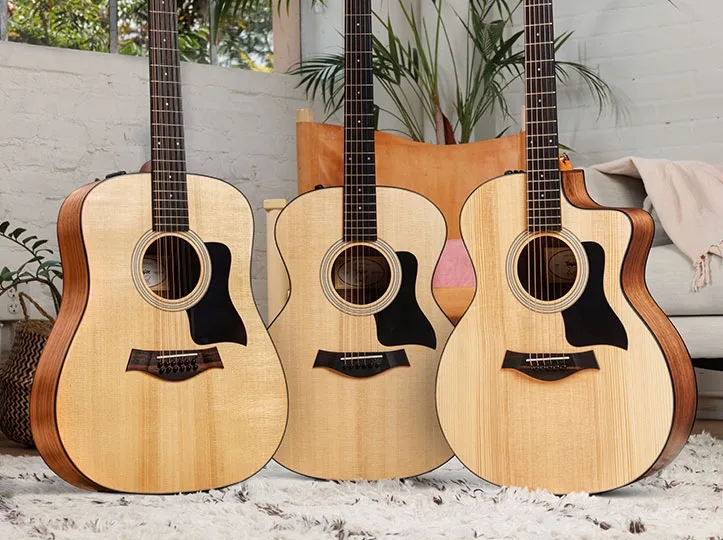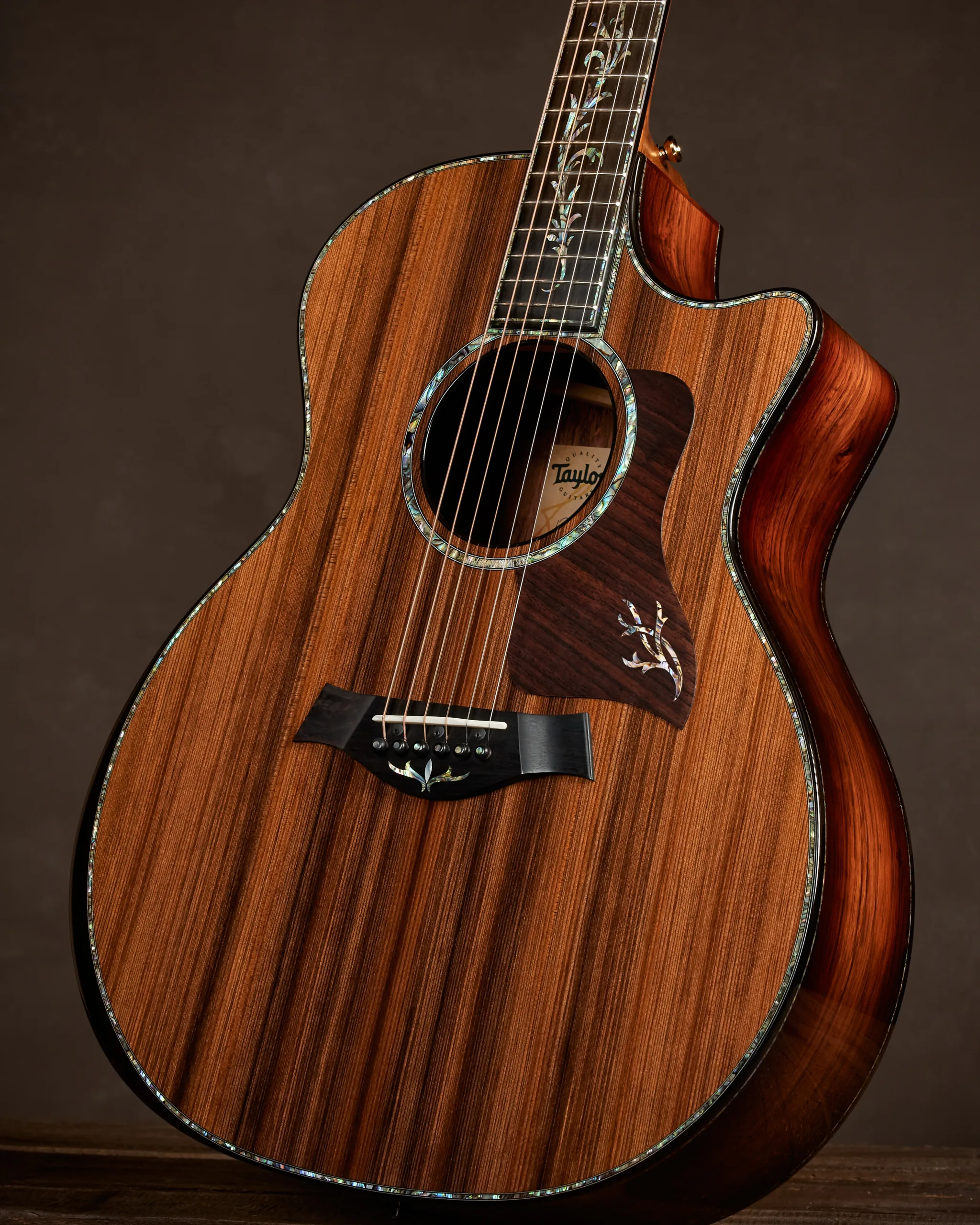Have you ever wondered why Taylor guitars sound so good? As a musician and guitar enthusiast, I’ve always been amazed by the rich, full-bodied sound of a Taylor guitar. It’s no surprise that these instruments are highly sought after by musicians all over the world. But what exactly sets them apart from other guitars? Is it just marketing hype or is there actually science behind their superior sound?
In this article, we’ll delve into the secrets of Taylor guitars and explore the science behind their exceptional sound quality. We’ll take a closer look at the materials used in their construction, how they are built, and even examine some acoustic principles to understand why they produce such amazing tones. By the end of this article, you’ll have a better understanding of why Taylor guitars stand out in terms of sound and what makes them so unique. So let’s dive in and discover the magic behind these beloved instruments!
So, Why do Taylor guitars sound so good?
Taylor Guitars are known for their exceptional sound quality and tone, often sought after by professional musicians and beginners alike. But what makes these guitars stand out from the rest? The answer lies in the science behind their construction.
Firstly, Taylor Guitars use a unique bracing pattern called the “Taylor V-Class” bracing system. This design allows for better stability and tonal balance throughout the entire guitar body, resulting in a more consistent and rich sound.
Additionally, Taylor Guitars use high-quality materials such as solid wood tops instead of laminated ones. This allows for better resonance and projection of sound. The type of wood used also plays a significant role in the overall sound quality. For example, spruce is often used for its bright tones while mahogany produces warmer tones.
Another factor that contributes to Taylor’s superior sound is their attention to detail during construction. Each guitar is handcrafted with precision and care, ensuring that every aspect of the instrument works together seamlessly to produce an exceptional sound.
Furthermore, Taylor Guitars have invested heavily in research and development to continuously improve their instruments’ acoustics. They use state-of-the-art technology such as computer-aided design (CAD) software to analyze how different elements affect sound production.
In conclusion, it is not just one specific factor but rather a combination of careful craftsmanship, innovative designs, high-quality materials, and advanced technology that make Taylor Guitars stand out in terms of sound quality. So whether you’re strumming chords or fingerpicking melodies on a Taylor Guitar, you can be sure that you’ll be treated to an unparalleled musical experience every time.
Understanding the Materials Used in Taylor Guitar Construction
When it comes to the art of crafting Taylor guitars, it’s all about selecting the right materials. Each component is chosen with care, not just for its beauty but also for how it enhances the sound and playability. The tops are typically made from Sitka spruce or cedar. These woods are light yet strong, giving your guitar a clear and powerful voice. On the other hand, you’ll often find mahogany or rosewood used for backs and sides because they add warmth and richness to every note.
One can’t overlook the importance of neck wood either. Maple and mahogany reign supreme here; they’re sturdy enough to withstand tension while offering smooth playability. Fretboards? That’s usually ebony—a dense wood that ensures durability under constant use while looking sleek and elegant.
- Choice of top wood: Sitka spruce vs cedar
- Bodies crafted from mahogany or rosewood
- Necks primarily made from maple or mahogany
- Fretboards often feature ebony
Every piece matters down to the smallest detail like bracing patterns inside the body using lightweight woods such as Adirondack spruce which helps in better resonance without adding much weight.
The finishes used—from gloss to satin—not only protect these cherished instruments but also enhance their visual appeal making each Taylor guitar both a musical tool and a work of art in its own right!
Exploring the Unique Build Techniques of Taylor Guitars
Taylor Guitars truly stands out when it comes to crafting instruments, offering a blend of tradition and innovation that shapes the sound and feel of their guitars. One unique technique they use is their patented bolt-on neck design. Unlike traditional dovetail joints, this method allows for precise adjustments without compromising the guitar’s integrity. The result? A perfect alignment every time, ensuring optimal playability and tonality. This innovative approach also facilitates easier repairs and modifications. You can fine-tune your guitar’s action with minimal hassle, making it an enduring instrument you’ll love for years.
Another noteworthy aspect is their dedication to sustainability through meticulous wood selection. Taylor employs advanced technologies like torrefaction, which involves baking the wood in a controlled environment to mimic the aging process naturally occurring over decades. This technique not only enhances stability but enriches the tonal quality right from day one.
Their commitment extends further with:
- A focus on eco-friendly sourcing practices.
- Utilization of urban trees harvested from city spaces.
- The groundbreaking V-Class bracing system.
Each element works harmoniously to produce rich sounds while caring for our planet’s resources. It’s these thoughtful touches that make Taylor Guitars more than just musical instruments—they’re masterpieces forged with passion and precision.
Read also: What guitar does Ed Sheeran play

Acoustic Principles: How Sound is Produced in a Taylor Guitar
When you strum a Taylor guitar, it’s like witnessing magic. The strings vibrate, creating waves that travel through the air to your ears. But how does it all come together so beautifully? It starts with resonance. The wood used in these guitars is carefully selected for its ability to vibrate efficiently. Sitka spruce tops and mahogany sides are common choices because they resonate well and produce a rich, full sound.
Inside the guitar’s body lies another secret: bracing patterns. These structures support the top of the guitar while allowing it to flex just enough to enhance resonance. Different bracing designs can shape the tonal qualities of a guitar—giving it either a bright or warm character. Taylor often uses their own innovative V-Class bracing system, which helps create better sustain and improved intonation.
Additionally, body shape matters too. A larger body will generally produce more volume and bass response due to greater air movement inside the chamber. Conversely, smaller bodies offer clarity and focus which some players prefer for fingerstyle or light strumming.
– Top woods like Sitka spruce
– Bracing systems such as V-Class
– Body shapes ranging from grand concert to dreadnought
Each element contributes uniquely to what you hear when playing a Taylor guitar—an intricate dance of physics and craftsmanship coming together in harmony.
In essence, producing sound on this instrument isn’t just about striking strings; it’s understanding how every component works in unison.
The right combination can turn simple notes into an acoustic masterpiece that’s pleasing not only technically but emotionally as well.
How Different Wood Types Influence the Sound of a Taylor Guitar
When it comes to the magic of a Taylor guitar, the type of wood used plays a crucial role in shaping its sound. Different woods bring out distinct tones and textures, making each guitar unique. For instance, mahogany is known for delivering a warm, midrange punch that’s perfect for players who prefer rich and balanced sounds. This wood offers clarity with excellent note separation, creating an ideal canvas for fingerstyle playing or rhythmic strumming. On the other hand, guitars made from rosewood are celebrated for their deep bass notes and sparkling trebles, offering an impressive range that excites many musicians.
Taylor also uses more exotic woods like koa and maple, which add their own special flavors to the mix. Koa provides a blend of warmth similar to mahogany but with extra brightness that evolves over time as you play more frequently—truly rewarding committed players with evolving soundscapes! Meanwhile, maple is renowned for its crispness and articulation; it’s less about booming resonance and more about sharp precision.
Whether you’re strumming chords or picking melodies:
- Mahogany gives warmth.
- Rosewood delivers depth.
- Koa adds evolving brightness.
- Maple offers clear precision.
Each type brings out different tonal qualities that cater to various musical styles.
So next time you pick up your Taylor guitar,
consider how its wood affects every note you play!
You may also like: Steinway Spirio Player Pianos
Conclusion: The Magic Behind the Superior Sound Quality of a Taylor Guitar
Have you ever picked up a Taylor guitar and immediately felt something almost magical? It’s not just your imagination—Taylor guitars are known for their superior sound quality, which can be traced back to their meticulous design and craftsmanship. First off, Taylor uses only the finest woods like spruce, mahogany, and rosewood. These materials aren’t chosen by chance; each type of wood produces its own unique tonal character that contributes to an incredibly rich sound palette.
Moreover, Taylor employs innovative technology in the construction process. Think of it as blending old-world artistry with cutting-edge science. They use computer-aided precision tools to ensure every cut and curve is perfect. But they don’t stop there—they apply a special “V-Class” bracing system inside the guitar body that boosts both volume and sustain while enhancing intonation.
– Pristine wood choices
– Precision cutting tools
– V-Class bracing system
All these elements combined create a resonance that feels almost alive under your fingers.
When you strum a chord on a Taylor guitar, what you’re really hearing is years of innovation layered upon traditional expertise. The company’s dedication shines through in every note—from warm lows to crystalline highs—which makes each playing experience feel extraordinary. Whether you’re plucking strings softly or going all out with aggressive strumming, the response remains impeccable because of these intricate details within its build.
In conclusion: owning or even just playing a Taylor guitar offers more than just auditory pleasure; it’s about experiencing this remarkable blend of nature’s finest materials harmonized through human ingenuity.

